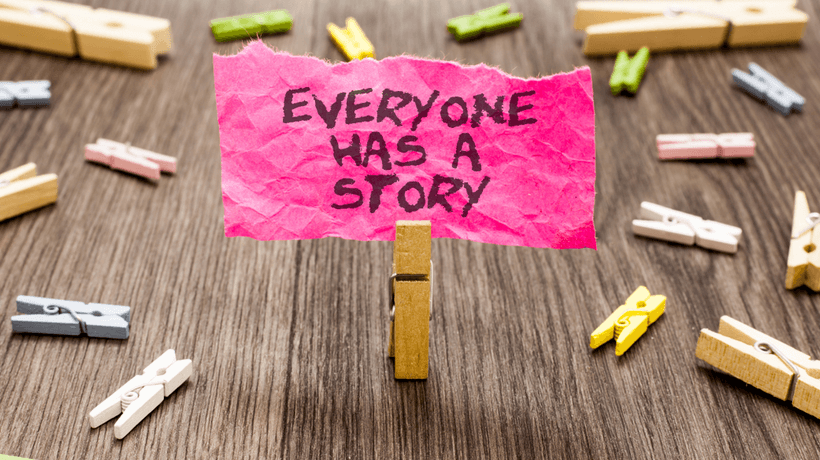Discover The Science Behind The Technique
We all know a great storyteller. They’re full of fantastic stories, brilliant at building suspense and always deliver the perfect punchline. A great story hooks everyone and keeps them on the edge of their seats. Just think of the frustration of a half-finished story and the pain of never knowing how it ended; it’s agony! It’s clear that stories are naturally engaging, but this is just one of the reasons why storytelling is an incredibly powerful tool when creating training courses.
In this article, we’ll explore 4 reasons why you should include stories in every single training course you create:
1. Stories Capture Our Attention
The ability of a training course to hold a learner’s attention is a critical measure of its success. Inattentive learners rarely learn well, as they are likely to skip and miss important information. Videos and interactive elements can be good ways to grab learners' attention, but a well-told story can be an equally, if not more powerful way to hook your learners and keep them engaged. As we all know from personal experience, stories are naturally engaging. Whether we’re listening to a friend, watching a movie, or reading a book, stories have the power to capture and hold our attention for long periods of time.
A study conducted by Northeastern University in Boston explored the effects of stories on our attention spans. Participants were presented with a scenario that included characters and an image. In the presentation of the scenario, one group of participants were given more story elements, such as elements of surprise and suspense.
Scans showed that participants who were given more details and story elements in their scenarios generated more brainwave activity than those who received bare-fact scenarios. This activity reflected their heightened attention to the task. In fact, we can pay so much attention to good stories that we can become totally lost in them. We are mentally transported to a different place and begin to identify with the characters in a story during a process psychologists call "assimilation."
Assimilation is a key ingredient in empathy. When we can take on the perspective and identity of a story character, we are more empathetic toward and more persuaded by the views of that character. Learning designers can take advantage of these mechanisms to grab the attention of learners and then empathize with the characters in a story.
2. Stories Are Highly Memorable
Have you ever started a story with "I can’t remember who told me this, or when, but…" It’s all too common to completely forget about the context of a story, while the story itself—the characters, the plot, the resolution—lives on in our memory, ready to be recalled and shared.
Stories are naturally deeply memorable for humans. This is partly because the key to a well-told story is its ability to trigger emotions. Joy, fear, sadness, anger, amazement, strong emotions stay with us for a long time as our brains continue to mimic the feelings and behaviors of the characters in a story well after we hear, see, or read it.
Stories don’t even need to be very unique to tap into this phenomenon. Joseph Campbell’s seminal work "The Hero with a Thousand Faces" revealed that the hero of the story can follow roughly the same arc of adventure and transformation every time, and our brains will stay hooked.
Another insight into the memorability of stories comes from Jean Piaget’s learning theory of constructivism. Through the dual processes of adaptation and assimilation, our brains try to connect new information to our prior experiences and knowledge. If we are able to relate a story to our own experiences or understandings, then our brain is able to build neural pathways between the two memories. These neural pathways greatly strengthen our ability to remember stories and new information.
Therefore, it’s important to ensure that stories in training scenarios have relatable events and characters and that they evoke emotions along the way.
3. Stories Teach Us
There is a reason why stories are both engaging and memorable: Stories are one of the most important ways that we learn. It’s easy to take widespread literacy for granted, but the ability for most people to read and write is a recent development, and for many places around the world, it’s still not the case. Instead, humans have been sharing knowledge for thousands of years through, you guessed it, storytelling. Through rich tapestries of lived experiences, myths, and legends, we are able to pass on important lessons from generation to generation.
Have you ever listened to a story and then thought: "Well, I’m never going to do that!" Perhaps it was a story of someone doing something foolish and suffering negative consequences as a result, or perhaps the character was clearly the villain of the story and met their demise from their evil actions.
Hearing a story about an action with bad outcomes can teach us to avoid that action almost as well as doing the action ourselves. The same occurs in reverse; a story with positive outcomes inspires us to copy the actions of the hero. This is important for teaching both practical knowledge (don’t touch hot things) and social knowledge (kindness is good, meanness is bad).
In fact, this ability of stories to teach us important lessons leads us to naturally look for meaning in stories. We are naturally far more satisfied with stories that have a clear message, and far more uncomfortable with stories that are ambiguous or controversial in their messaging.
4. Stories Change Hearts And Minds
Thus, stories are engaging, memorable, and naturally teach us things. Each of these elements strongly contributes to the power of the others (e.g., stories are memorable because they are engaging, and we learn from stories because they are memorable, etc.)
All three of these elements create a powerful chance to influence the behavior of a listener. Behavior change is often a holy grail for trainers and learning designers. Whether you’re looking to implement safety procedures, improve leadership skills, or share your organization's values, you are ultimately looking to influence the behaviors of your learners.
Research has shown that stories are far more effective for changing behavior than information-heavy narratives. Bare facts and dry statistics rarely change hearts and minds, but stories do. So, why not try including a story or two in your next training course? By including relatable characters, evoking emotions, and communicating a clear message, you can improve the chances of your learners engaging with your course, remembering it, and changing their behavior afterward.


